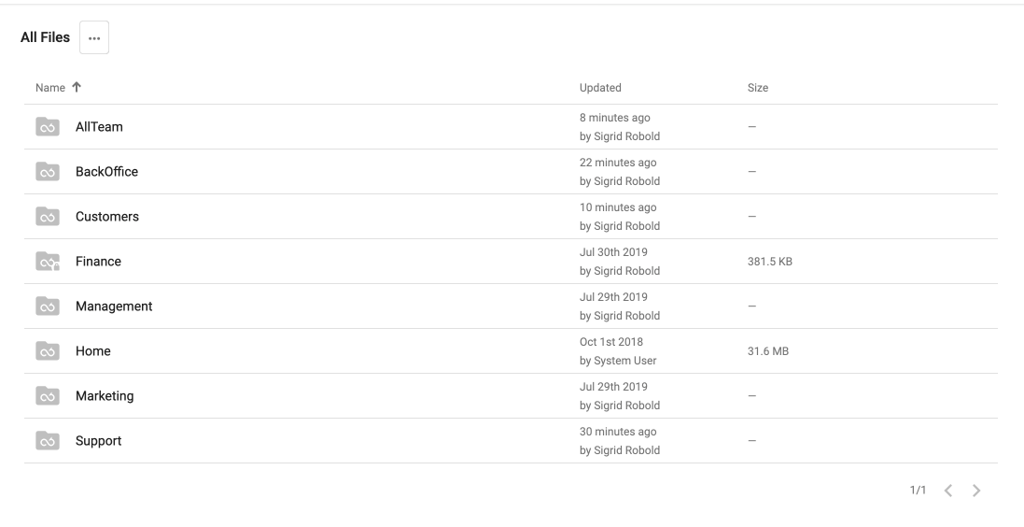
In order for DRACOON to make your users' daily work easier, it must be clear to everyone where data can be found in DRACOON. The data room structure forms the basis of your DRACOON cloud, which is why it is very important that it is clearly laid out and useful. Before starting the rollout, we advise you to intensively consider how you want to set up your data room structure for all users.
From our many years of experience with the introduction of DRACOON in various company structures, we were able to get to know many different use cases and support the implementation of the appropriate data room concept. In the following, the most common usage scenarios are presented - perhaps you will find a suitable approach for your organization! At the end of this article you will find our Hero Tip for developing a suitable data room structure for every company.
Probably the most common method of structuring data rooms in DRACOON is to create top-level data rooms based on the departments into which the company is divided. A separate data room is created for each department, which can be managed by the individual department heads.

DRACOON data rooms can be nested at will, i.e. they can be further structured in the department data rooms according to subdivisions or subjects.
Many companies not only have one location but are also represented at several locations in Germany or even all over the world. These locations often function as separate, independent organizations and also use different data valid only for the respective location. Here we recommend dividing the data rooms at the highest level according to the locations and to create the structures below according to the respective location.

So that users know exactly where the data is located, which data is relevant for them, they are then authorized according to their location, so that only the data that is relevant for their location is visible. Employees such as members of the cross-site IT department or the management can, of course, be authorized to access all data rooms.
For the data that is relevant for every employee of the organization regardless of location, such as manuals for tools or price lists, an "All Team" or "General" folder can be created to which every employee is authorized.
Many customers do not use DRACOON for file storage, but mainly for communication with external persons such as customers, partners, clients, etc.
They do not have their own DRACOON account, data is received and sent via upload and download links. Here we recommend a breakdown according to the respective exchange partner. It is up to you whether you want to map this distribution at the highest level or only in another data room. However, we would still recommend subdividing the data rooms according to the organizational structure as described above.
If you use DRACOON mainly for such a file exchange, it can quickly happen that it becomes confusing due to the many different customers, partners or clients. We have a special practical tip for this: divide the exchange partners alphabetically:

DRACOON Hero-Tip: As already mentioned at the beginning, we recommend that you intensively think through the concept of DRACOON data rooms for your company. Sit down with the most important colleagues who are working with you on the DRACOON project and consider how your organization is structured and how this structure can be mapped in DRACOON. Organize a short introductory meeting of approx. 1 hour with the participants, in which you give input for thinking about the concept of the data rooms and hold a workshop a few days later with the same group of participants, in which all ideas and suggestions are collected and discussed. In almost all cases there will be a tendency to recognize how the employees want DRACOON to be built. Draw up the structure together and align it with your organizational structure to ensure that the two concepts fit together.
Once it is clear which departments exist and exactly what each department is dealing with, you will no longer find it difficult to create a suitable structure for the data rooms in your DRACOON.
Are you unsure whether your design is the best possible solution for your organization? If you simply book a consultation appointment with our Customer Success Team, then we can examine your concept together.
These Stories on Product & Features

© 2023 DRACOON GmbH
Made in Germany
Phone. +49 (941) 7 83 85-0